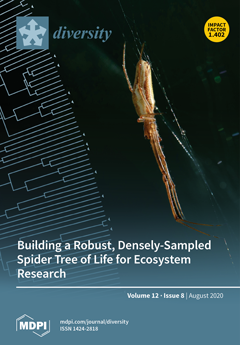The Poyang water system in Jiangxi Province, China, is important for floodwater storage, diversity maintenance, and the economy of the Poyang Lake watershed. In recent years, pollution has destroyed the ecosystem and impacted human health and the related economy. The water quality of
[...] Read more.
The Poyang water system in Jiangxi Province, China, is important for floodwater storage, diversity maintenance, and the economy of the Poyang Lake watershed. In recent years, pollution has destroyed the ecosystem and impacted human health and the related economy. The water quality of the Poyang Lake watershed and the impact of human interference must be assessed. Conventional analysis and high-throughput sequencing were used to evaluate the structure of both zooplankton and fungi in six sub-lakes of the Poyang Lake watershed under different anthropogenic influences. The sub-lakes included were Dahuchi Lake (in natural preserve, DHC), Shahu Lake (in natural reserve, SH), Nanhu Lake (out of natural preserve, NH), Zhelinhu Lake (artificial reservoir, ZLH), Sixiahu Lake (agricultural lake artificially isolated from Poyang Lake, SXH), and Qianhu Lake (urban lake, QH). The densities and biomass of the zooplankton in DHC, SH, NH were higher compared with those in SXH, ZLH and QH (
p < 0.05). Zooplankton distribution of SXH was the most strongly associated with total nitrogen (TN), total phosphorus (TP) and chlorophyll a (Chl a), while QH was highly associated with pH, conductivity (Cond), and water temperature (WT). For fungal diversity, a large number of beneficial fungi, Basidiomycota (phylum level) and
Massarina (genus level) were obtained from DHC (55.3% and 27.5%, respectively), SH (54.4% and 28.9%, respectively), and NH (48.6% and 1.4%, respectively), while a large number of pathogenic Chytridiomycota (at phylum level) were identified from SXH (21.0%), ZLH (5.5%), and QH (7.5%). Manmade pollutants have impacted the natural hydrology and water quality and promoted variation between the zooplankton and fungi in the six sub-lakes, reducing the relative abundance of beneficial fungi and increasing the number of pathogens in the environment, which threatens human health and economic production. Understanding the diversity among the zooplankton and fungi in the six sub-lakes of the Poyang Lake watershed may help guide future water management practices.
Full article





